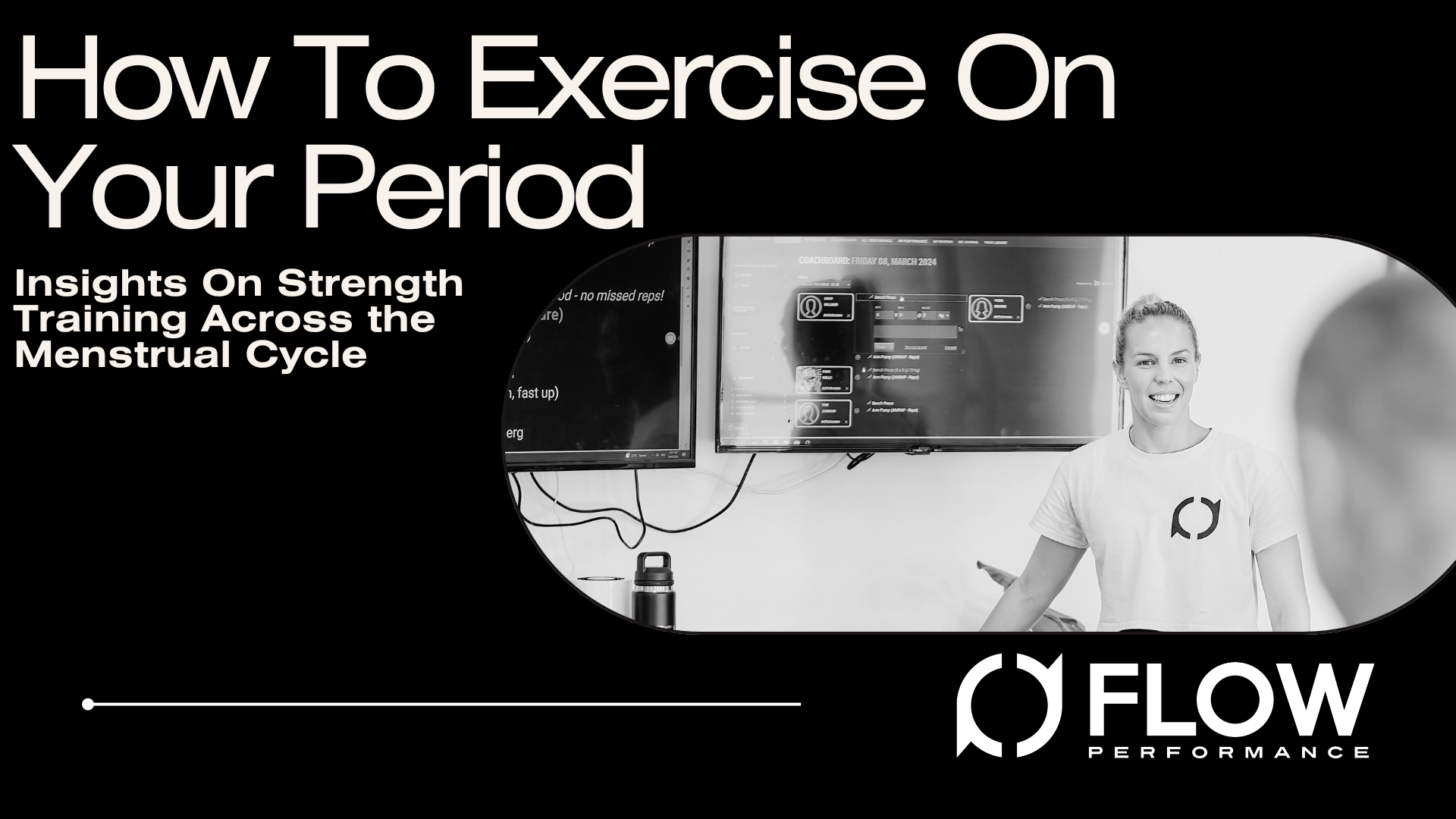Insights On Strength Training Across the Menstrual Cycle
In today’s blog, I discuss the physiological changes during the menstrual cycle and empower women to optimise their strength training routines during each cycle phase. By combining Western scientific knowledge and Traditional Chinese Medicine (TCM) principles, I offer women a holistic approach to fitness that can enhance well-being and performance.
I will conclude today’s blog by giving you an insight into how I structure my training routine around my menstrual cycle. Before we get there, let’s dive into the science behind your hormones and their unique physiological processes.
The Menstrual Cycle: A Western Scientific Overview
The menstrual cycle, typically lasting between 21 and 35 days, is divided into four main phases, each characterized by fluctuating hormone levels that can affect physical performance and recovery:
The 4 key female fertility hormones are:
*Refer to diagram Hormones and Menstrual Cycle Below*
Follicle-Stimulating Hormone (FSH) stimulates the growth of ovarian follicles in the ovary ahead of ovulation, it is also responsible for increasing oestrogen production.
Luteinising Hormone (LH) travels to the ovaries and acts on them to make them produce hormones that help to release an egg from the ovary (ovulation)
Oestradiol (Oestrogen)
- Produced by the ovaries and helps to promote normal ovulation, conception, and pregnancy
- A woman’s oestrogen levels naturally rise during the menstrual cycle, it’s this increase that enables an egg to develop and then be released from the ovaries at the time of ovulation
- Oestrogen prepares the body for pregnancy by thickening the lining of the uterus to allow a fertilised egg to implant and develop
Progesterone
- Produced by the corpus luteum once an egg is released
- Progesterone stops the endometrium from growing and gets the uterus prepared for the potential implantation of a fertilised egg
- If the egg isn’t fertilised, then the corpus luteum will degenerate and progesterone levels will fall (resulting in shedding of the uterine wall i.e bleeding)
- If pregnancy does occurs, progesterone levels will continue to rise

- Menstrual Phase (Days 1-5): The cycle begins with menstruation. Hormone levels (oestrogen and progesterone) are low, which might result in lower energy levels. This period might be a good time to engage in lighter, recovery-focused workouts.
- Follicular Phase (Days 1-13): Overlapping with menstruation, this phase sees a rise in oestrogen, leading to increases in energy, mood, and pain tolerance. It’s an excellent time for high-intensity strength training and personal bests.
- Ovulatory Phase (Day 14, in a 28-day cycle): Oestrogen peaks and then drops sharply, while testosterone levels rise slightly. This brief period may offer optimal strength and performance, making it ideal for challenging strength training sessions.
- Luteal Phase (Days 15-28): After ovulation, progesterone rises, which might cause fatigue, bloating, and less efficient temperature regulation. Training might feel harder during this phase, so adjusting the intensity and focusing on steady, moderate exercises could be beneficial.
Insights from Traditional Chinese Medicine
Traditional Chinese Medicine (TCM) perceives the menstrual cycle as a reflection of the natural ebb and flow of Yin (feminine, cool, moist) and Yang (masculine, hot, dry) energies within the body, and Qi as the concept of vital energy.
Here’s how Chinese Medicine interprets each phase of the Menstrual cycle:
- Menstrual Phase: TCM views this phase as a time when the body cleanses itself of old “Qi” and blood. It advises gentle movements and exercises that promote relaxation and rejuvenation, such as yoga, rather than strenuous weight training.
- Follicular Phase: As new “Qi” and blood are generated, energy levels rise. TCM recommends more dynamic and strength-building exercises. To enhance vitality, foods that support blood and Qi, like beets and leafy greens are recommended.
- Ovulatory Phase: The peak of Yin transitioning into Yang, may correlate to overall increased energy levels. TCM suggests this is the best time for peak performance training, taking advantage of the body’s maximum strength capabilities.
- Luteal Phase: As the body prepares for the possibility of pregnancy, it conserves energy and focuses on nurturing and maintaining Qi. TCM recommends lighter activities and highlights the importance of hydration and nutrients like seeds and nuts to support hormone health.
Summary of Integrating Both Worlds
By understanding and integrating insights from both Western science and Traditional Chinese Medicine (TCM), women can customise their strength training programs to align with their menstrual cycles and their body’s natural rhythms.
So, you are probably thinking what do I do now?
How do I implement these concepts into my training routine?
Let me give you a rundown on how I structure my training around my menstrual cycle.
Step one, I strongly advise you to download the app “Flo” (Flo – ovulation calendar, period tracker, and pregnancy app) to assist you in tracking your cycle and then adjusting your training and nutrition accordingly.
I would consider the week before your period (luteal phase) and the week of your period (menstruation) to reduce your training load to a moderate intensity, increase your nutrition, and caloric intake to support your recovery and body’s energy demands. Hint, moderate training can help combat those period cramps and PMS symptoms!
As you finish your period (follicular phase) and your “feel good” hormones begin to rise, you can increase the intensity of your training. As you move into the ‘ovulatory phase’ you have an increase in oestrogen which is associated with an increase in strength, laxity and poor neuromuscular control. Although it is a great time for peak performance and max strength gains it is also associated with a higher risk of injury. Now, I know what you are thinking, can us women just catch a damn break? (lol).
This does not mean you are going to endure an injury at peak ovulation, it just means there is a slightly higher risk associated. Consider how you feel that day; did you get enough sleep, enough hydration, are your joints sore, fatigued or do you have a history of recurring injuries. Then from there, evaluate if it’s a good day for you to be hitting those PB’s and focus on good movement patterns when exercising.
I understand you can’t control where you are in your cycle to always align with your training schedule, however, just remember consistency over intensity – You are still going to get those gains without pushing your body to the absolute limit every session!
The above approach will enhance your physical performance and support your hormonal health and overall well-being in a way that honors your unique physiological processes.
If you have any concerns or questions, please do not hesitate to have these conversations with your trainer or allied health professional.
Happy Menstruation 🙂
Han
xoxo




